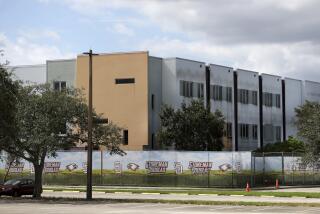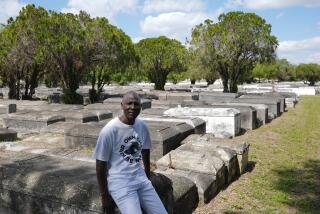Human remains believed uncovered in search at Florida boys school
The first of many to die at a Florida reform school infamous for inflicting beatings and abuse is identified in official records only as “Unknown colored boy.”
Researchers say he died in 1911. But his name, final resting place, and the reason for his early death remain a mystery.
He’s not alone.
The whereabouts of nearly two dozen others who died at the Arthur G. Dozier School for Boys are also unknown, researchers said.
Those who once stayed at the reform school -- and were subjected to regular lashings by school officials -- say many more could be buried on the property of the now-shuttered state-run school, located in Marianna, a small town in Florida’s panhandle.
“I think there’s at least 100 more bodies,” Robert Straley, who was at the school for 10 months starting in 1963, said in a telephone interview.
“From 1900 to 1940 were the most brutal years in that place. Back then, a white boy’s life wasn’t worth much and a black boy’s life wasn’t worth anything.”
A clearer view of who died at the school, and why, may soon surface. On Saturday, a team of researchers began a year-long exhumation of burial sites on the school’s property.
After one day of excavations, the team of University of South Florida researchers uncovered what they believe are human bone fragments along with cloths and pins resembling those used in burial shrouds, reported the Jackson County Floridian. Also uncovered were hinges, believed to have been used on wooden coffins.
The excavation site falls outside the boundary of what for years was the school campus’ main cemetery.
Former residents at the school, including Straley, have led the push for setting the record straight about the school’s treatment of its young inmates, which came to light in a 2008 expose in the Miami Herald.
An investigation by the Florida Department of Law Enforcement concluded in 2010 that, although it found dozens of graves, there was not enough evidence to pursue criminal charges related to allegations of physical and sexual abuse of boys at the school.
The state’s Department of Juvenile Justice closed the school in 2011 as the federal government was investigating allegations of maltreatment and abuse. The federal government ultimately faulted the state for poor oversight and violating the rights of the inmates.
Researchers at USF took up the cause and used radar technology and soil analysis to identify 13 more graves than state investigators had found. Some of them were in a wooded area that had to be cleared of trees and brush.
Former inmates told researchers that they had heard of other burial sites on the property. One former inmate said he personally dug a grave on a section of the property different from the main cemetery. And since the cemetery sits on what was then the “colored” section of the reform school, many believe there was a separate burial site for white students.
“All these graves of the children and the two employees that died at the school and are buried here -- they’ve been quite literally lost in the woods, ” said Erin Kimmerle, one of the lead researchers and an associate professor of anthropology at the University of South Florida, as reported by the Jackson County Floridian.
Kimmerle and other USF researchers determined that there were 98 deaths on the property; in 22 cases scant documentation of the deaths exists. But securing permits delayed an exhumation.
In August, state officials approved the USF researcher’s permit, paving the way for Saturday’s launch of the research process.
To Straley, who said he once wrote to more than 100 journalists asking them to cover the story of abuse at Marianna’s reform school for boys, the start of the excavation was “a huge victory.”
Haunted by his abuse, Straley said he’s also troubled by the delays in setting the record straight.
“Somebody should have blown the whistle on Marianna long ago,” Straley said.
ALSO:
Driving is down, and it’s not just the economy, study finds
New Jersey court: Texting with a driver can get you in trouble too
Slain WWII vet Delbert ‘Shorty’ Belton buried with military honors
Twitter: @MattHjourno
More to Read
Sign up for Essential California
The most important California stories and recommendations in your inbox every morning.
You may occasionally receive promotional content from the Los Angeles Times.











